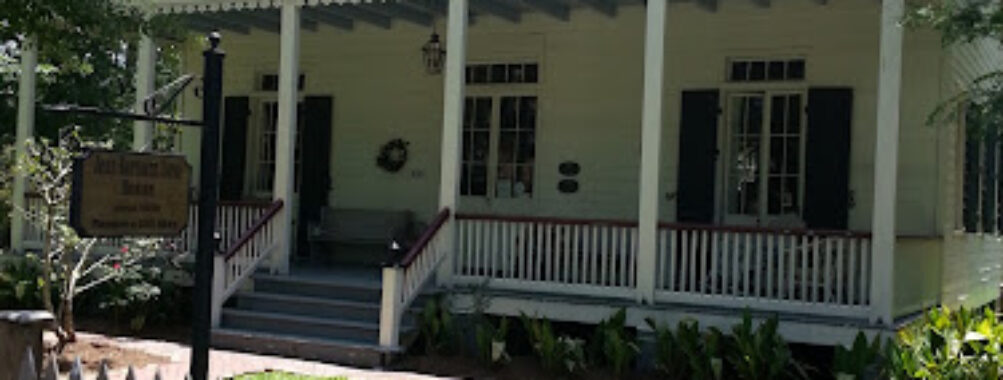
Jean Baptiste Lang Creole House Museum
“`html
Table of Contents
Description
The Jean Baptiste Lang Creole House Museum is one of those places that feels like stepping into a time capsule, only you can actually touch the walls and feel the history breathing through the wood. Built in the 1850s by Jean Baptiste Lang, a Belgian tobacco merchant who clearly had a taste for Creole architecture, this house has seen its fair share of ups and downs. It survived the Civil War, nearly got wiped out by Hurricane Katrina, and yet here it stands—restored, preserved, and open for curious travelers like you and me.
What makes it special isn’t just the age of the house, but how it’s been lovingly brought back to life by the community. You’ll notice the original architectural details, the kind of craftsmanship that you just don’t see in modern buildings. The museum isn’t massive, and that’s actually a good thing—it feels intimate, personal, and manageable. You can wander through the rooms without feeling rushed, and if you’re like me, you’ll probably linger a little too long in spots just trying to imagine what life must have been like here 170 years ago.
It’s not just a museum either. These days, the Lang House doubles as a community space and event venue. There’s a gift shop tucked inside with locally inspired items (I picked up a handmade ornament that still hangs on my Christmas tree). And if you’re planning a wedding, reception, or even a small gathering, the rear parterre garden makes for a charming backdrop. The vibe is warm, family-friendly, and welcoming—definitely not the kind of stiff, roped-off museum where you feel like you’re going to get scolded for breathing too hard.
Of course, like any place, it’s not perfect. Some visitors might find it smaller than expected or wish there were more exhibits. But honestly, the charm lies in its simplicity. This isn’t a grand plantation or a massive gallery—it’s a slice of Creole history that feels approachable, real, and lived-in. And that’s exactly why it deserves a spot on your Northshore itinerary.
Key Features
- Authentic Creole-style home built in 1850
- Restored after Hurricane Katrina with original architectural elements preserved
- Free public tours available, both guided and self-guided
- Gift shop offering locally made gifts and souvenirs
- Rear parterre garden available for private events
- Family-friendly atmosphere with hands-on historical insights
- Wheelchair accessible entrance, restrooms, and parking
- On-site parking for convenience
Best Time to Visit
Timing is everything with the Lang House. The museum is closed in August (probably because Louisiana summers can be downright brutal), so plan accordingly. September through May is the sweet spot, when the weather is more forgiving and the garden is especially pleasant to wander through. Personally, I think fall is the best time—there’s something about the crisp air and golden light that makes the old wood glow a little warmer. Spring is lovely too, with flowers blooming in the garden and the lakefront nearby buzzing with life.
If you’re not a fan of crowds, weekday mornings are usually quiet. You can take your time, ask questions, and really soak in the history without feeling like you’re part of a tour bus herd. But if you thrive on energy and chatter, weekends bring more visitors, and sometimes you’ll catch special events or community gatherings that add to the experience.
How to Get There
Reaching the Jean Baptiste Lang House is pretty straightforward if you’re already in the Northshore area. It’s located in Mandeville, which is across Lake Pontchartrain from New Orleans. If you’re driving from New Orleans, the trip across the Causeway Bridge is an experience in itself—it’s one of the longest bridges in the world, and halfway across you’ll swear you’re floating in the middle of the lake. Once you’re in Mandeville, the house is easy to find near the lakefront. Parking is on-site, so you won’t have to circle the block endlessly or feed a meter every hour.
For those who don’t want to drive, rideshare apps and local taxis are an option, though I’d say having your own car gives you the freedom to explore more of Old Mandeville afterward. There are cafes, shops, and scenic spots nearby that pair perfectly with a museum visit.
Tips for Visiting
First off, don’t rush it. Even though the house isn’t huge, give yourself at least an hour to really enjoy it. Take the guided tour if it’s available—the docents are passionate and full of stories that you won’t find on the little info cards. I remember one guide pointing out a detail in the woodwork that I completely missed, and it changed the way I looked at the whole room.
Wear comfortable shoes, especially if you plan on strolling the lakefront afterward. Bring a camera, but be respectful—this is a historic site, not just a photo op. And if you’re traveling with kids, you’ll be glad to know it’s family-friendly. Children can explore without too many restrictions, which is rare in historic homes.
One more thing: check the hours before you go. Since it’s closed in August and occasionally used for private events, you don’t want to show up only to find the doors locked. And don’t skip the gift shop—it’s small but thoughtfully curated, with items that actually feel connected to the place rather than generic trinkets.
If you’re the kind of traveler who loves history but gets overwhelmed in massive museums, the Jean Baptiste Lang Creole House Museum is a perfect fit. It’s approachable, authentic, and just quirky enough to stick with you long after your trip. Honestly, it’s the kind of place that reminds you why travel is worth it—not just to see new things, but to feel the stories of people who came before us.
“`
Location
Places to Stay Near Jean Baptiste Lang Creole House Museum
Find and Book a Tour
Explore More Travel Guides
No reviews found! Be the first to review!